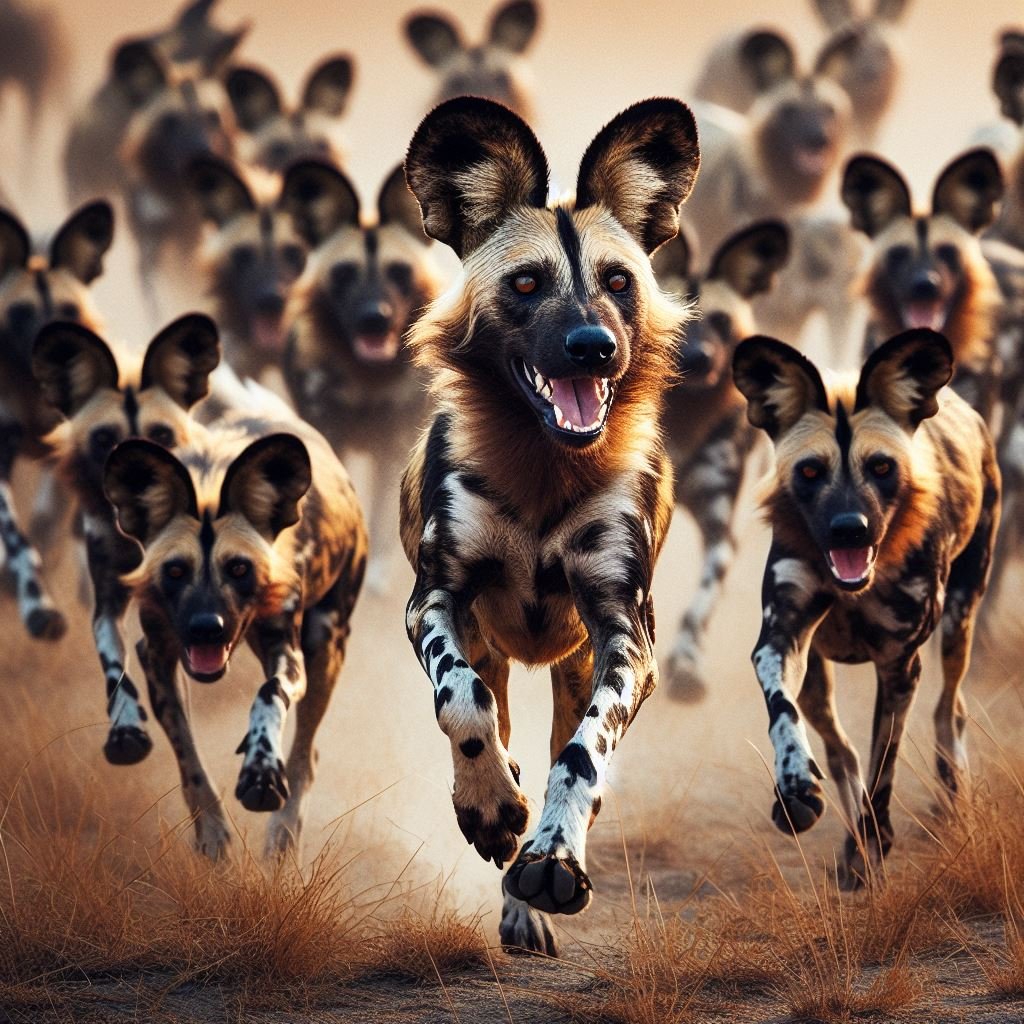20 Fun Facts about African Wild Dogs
The Unique World of African Wild Dogs
African wild dogs, also known as painted wolves or Cape hunting dogs, are one of Africa's most fascinating and endangered species. These social and intelligent canines are known for their distinctive markings and remarkable hunting skills. Here are 20 fun facts to discover more about these extraordinary animals.
1. Unique Coat Patterns
Every African wild dog has a unique coat pattern, making them easily identifiable individually.
2. Highly Social Animals
They live in packs, usually consisting of 6-20 dogs, but some packs can have as many as 40 members.
3. Efficient Hunters
African wild dogs are successful hunters, with a success rate of over 80%, much higher than lions.
4. Incredible Stamina
They can run at speeds up to 44 mph (70 km/h) and maintain a steady pace over long distances to tire out prey.
5. Endangered Species
They are one of the world's most endangered mammals, with only about 6,600 left in the wild.
6. Strong Social Bonds
Pack members have strong social bonds and care cooperatively for the young and the sick.
7. Democratic Decisions
Packs make decisions democratically, often through collective vocalizations or sneezing to indicate readiness for hunting.
8. Vocal Communication
They communicate using a variety of sounds, including whines, squeaks, and hoots.
9. Large Home Ranges
Packs roam across large territories, which can be over 1,000 square miles.
10. Diet
Their diet mainly consists of antelope, but they also hunt rodents, birds, and even large wildebeests.
11. Distinctive Ears
They have large, rounded ears that improve hearing and help in heat dissipation.
12. No Two Packs are Alike
Each pack has its unique social structure and hunting strategies.
13. Altruistic Behavior
They frequently share food with injured or ill members, showcasing a caring and communal nature.
14. Pup Care
Pups are given priority at feeding times, often eating before the adults.
15. Non-Territorial
Unlike many other predators, they do not defend a specific territory, focusing more on their nomadic lifestyle.
16. High Reproductive Rate
Females can have up to 20 pups in a single litter, the highest number among all canids.
17. Threats to Survival
Major threats include habitat loss, human-wildlife conflict, and diseases like rabies and distemper.
18. Collaborative Hunters
Their hunting strategy is based on teamwork and endurance, often chasing prey to exhaustion.
19. Lifecycle
In the wild, they live up to 11 years, though their lifespan can be longer in captivity.
20. Conservation Efforts
Various conservation programs are underway to protect them, including anti-poaching measures and habitat restoration.
Celebrating the African Wild Dog
African wild dogs are remarkable for their distinctive appearance, social structure, and hunting prowess. Their survival in the wild is a testament to their adaptability and the strong bonds within their packs. Understanding and appreciating these animals is crucial for their conservation and the preservation of Africa's diverse wildlife heritage.













